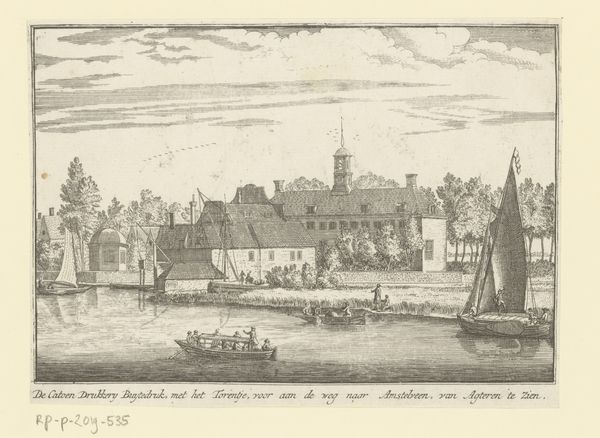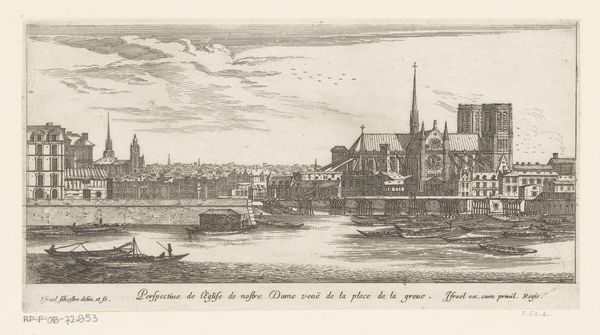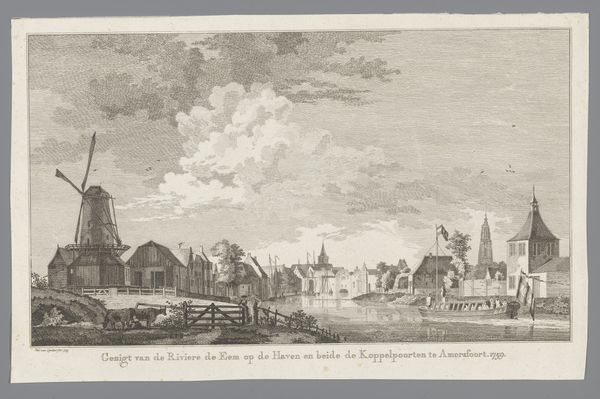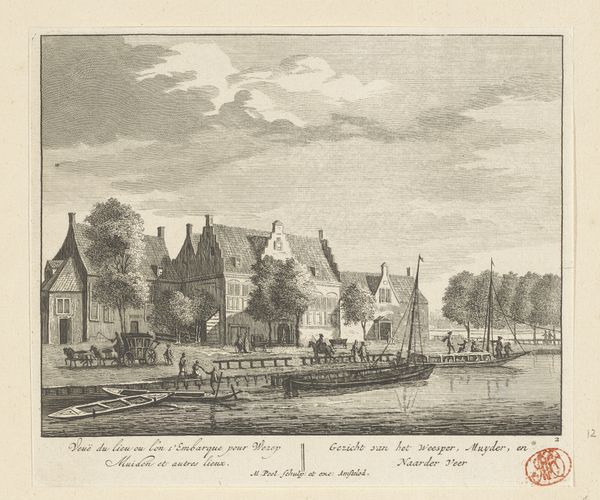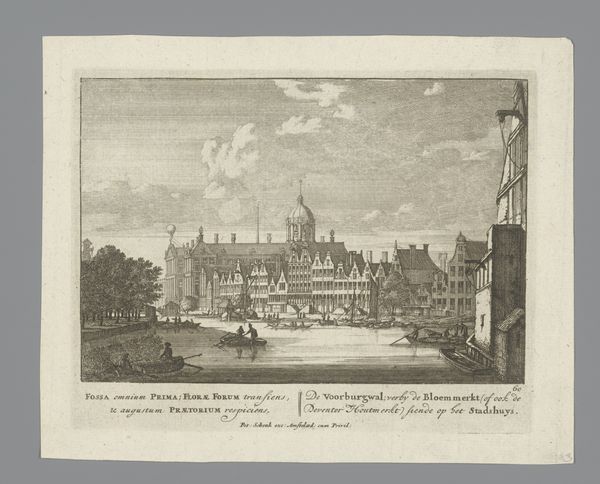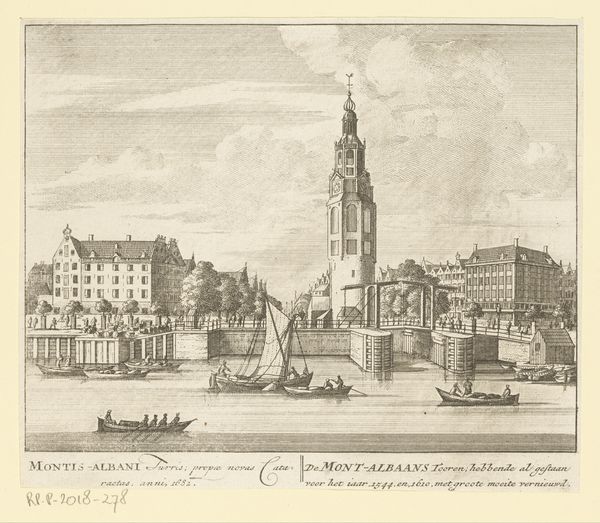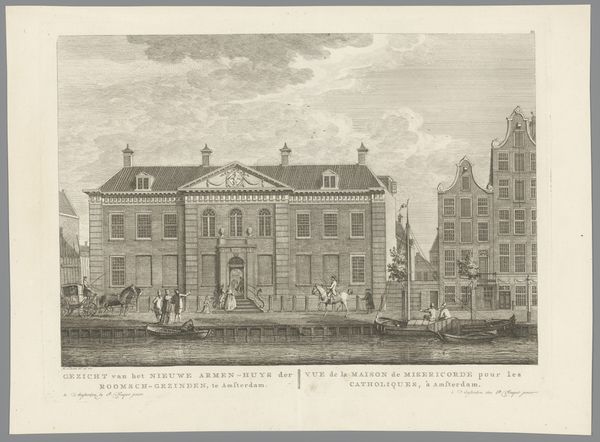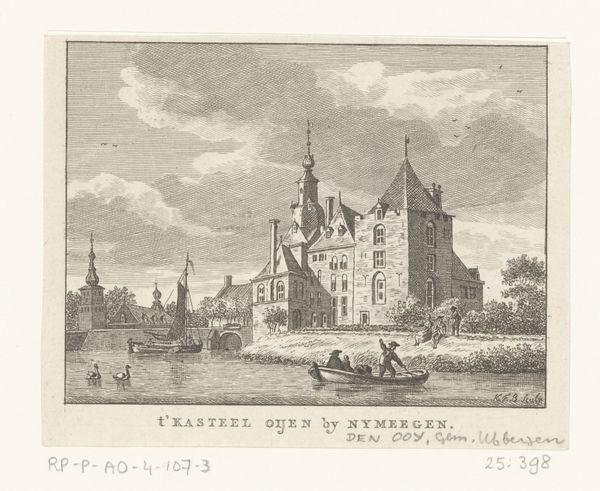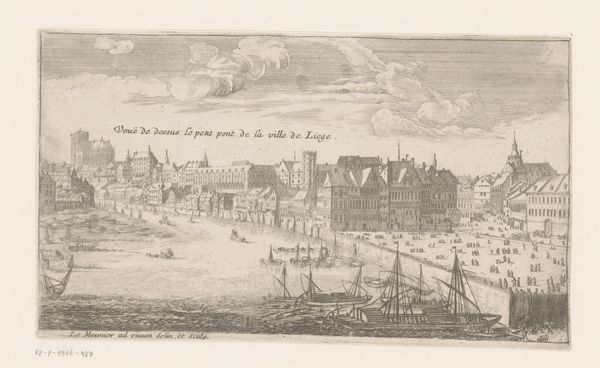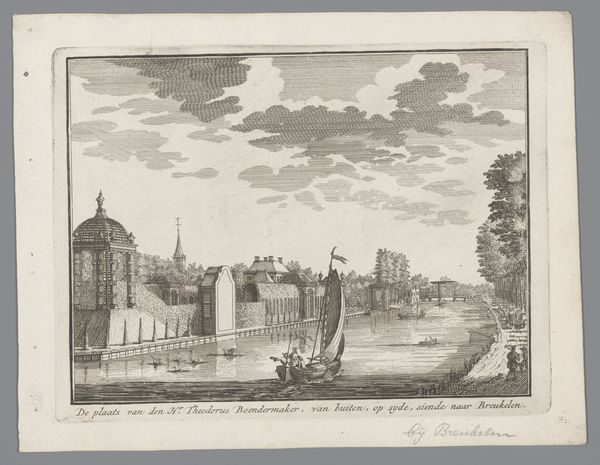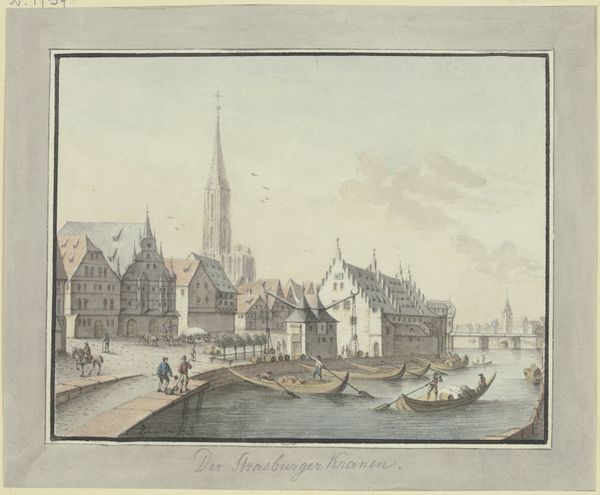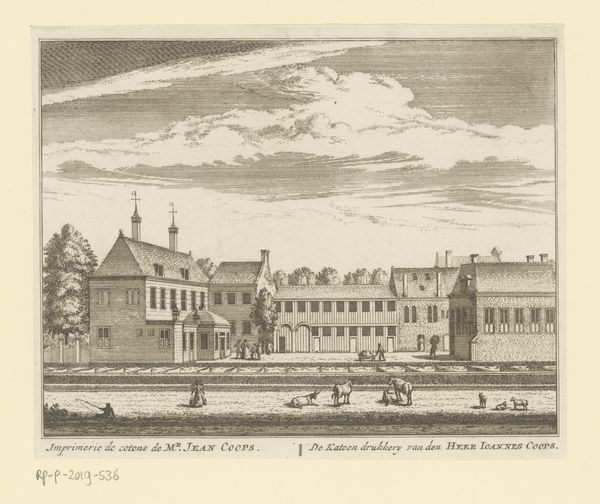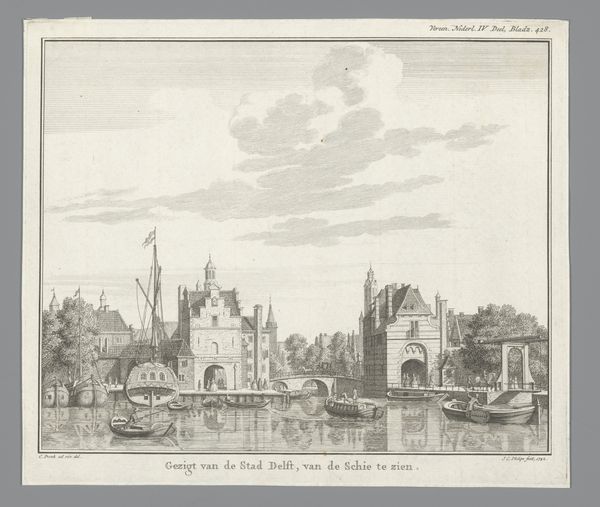
Gezicht op het Sint-Pietersgasthuis en het Sint-Agathaklooster te Amersfoort 1760
0:00
0:00
drawing, print, paper, engraving
#
drawing
#
dutch-golden-age
# print
#
landscape
#
perspective
#
paper
#
cityscape
#
genre-painting
#
engraving
#
realism
Dimensions: height 192 mm, width 307 mm
Copyright: Rijks Museum: Open Domain
Curator: Looking at Paulus van Liender’s 1760 engraving, “View of the Spui, St. Peter’s Hospital, and St. Agatha’s Monastery in Amersfoort,” one is immediately struck by the artist's attention to detail in capturing this cityscape. Editor: Yes, but initially, the pale monochrome of the drawing feels…antiseptic, almost cold. Does it purposefully present institutions as rather detached from the lived experiences of ordinary folk? Curator: It is crucial to understand that topographical prints such as these played a vital role in shaping urban identities. This work depicts, primarily, institutional power; consider how religious and philanthropic bodies asserted their presence within Dutch society. This isn’t mere passive observation, but rather active image construction! Editor: True, there's a deliberate sense of order being portrayed, perhaps mirroring the structured power these institutions possessed within the community. Were the spaces accessible to all, or only to particular groups based on factors like class and religion? Who benefited, and who might have been excluded by these structures? I see it as a coded portrayal of who holds sway in the city. Curator: The institutions often wielded significant socio-political power. Commissioning prints such as this broadcast an ideal version of Amersfoort back to its inhabitants, as well as to possible investors, encouraging engagement and reinforcing its narrative of religious and charitable focus. How this might contribute to societal structures should concern us! Editor: And looking at it that way opens up interesting avenues for understanding its cultural role, as not simply a portrait of a city, but an active element within the city’s own power dynamics and political messaging. A potent PR message, in effect. Curator: Exactly. I hope our visitors gain an awareness of this kind of representation not simply as capturing a picturesque scene, but also a critical point of view of how images bolster institutions within the civic landscape. Editor: I think it invites questioning the supposed "objectivity" in visual representation; something still pertinent to current discussions of visual bias, especially within historical records.
Comments
No comments
Be the first to comment and join the conversation on the ultimate creative platform.
